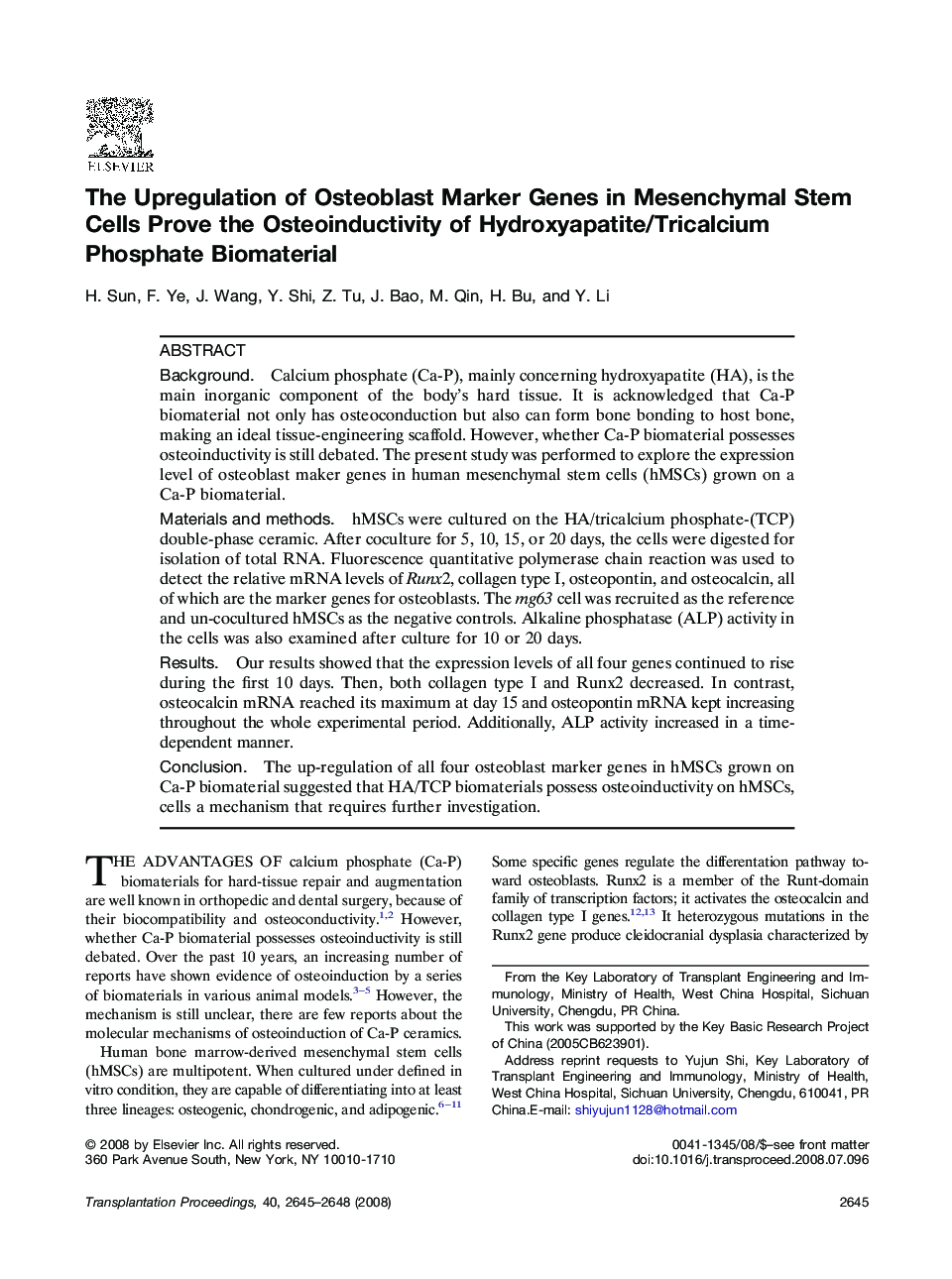| Article ID | Journal | Published Year | Pages | File Type |
|---|---|---|---|---|
| 4262023 | Transplantation Proceedings | 2008 | 4 Pages |
BackgroundCalcium phosphate (Ca-P), mainly concerning hydroxyapatite (HA), is the main inorganic component of the body's hard tissue. It is acknowledged that Ca-P biomaterial not only has osteoconduction but also can form bone bonding to host bone, making an ideal tissue-engineering scaffold. However, whether Ca-P biomaterial possesses osteoinductivity is still debated. The present study was performed to explore the expression level of osteoblast maker genes in human mesenchymal stem cells (hMSCs) grown on a Ca-P biomaterial.Materials and methodshMSCs were cultured on the HA/tricalcium phosphate-(TCP) double-phase ceramic. After coculture for 5, 10, 15, or 20 days, the cells were digested for isolation of total RNA. Fluorescence quantitative polymerase chain reaction was used to detect the relative mRNA levels of Runx2, collagen type I, osteopontin, and osteocalcin, all of which are the marker genes for osteoblasts. The mg63 cell was recruited as the reference and un-cocultured hMSCs as the negative controls. Alkaline phosphatase (ALP) activity in the cells was also examined after culture for 10 or 20 days.ResultsOur results showed that the expression levels of all four genes continued to rise during the first 10 days. Then, both collagen type I and Runx2 decreased. In contrast, osteocalcin mRNA reached its maximum at day 15 and osteopontin mRNA kept increasing throughout the whole experimental period. Additionally, ALP activity increased in a time-dependent manner.ConclusionThe up-regulation of all four osteoblast marker genes in hMSCs grown on Ca-P biomaterial suggested that HA/TCP biomaterials possess osteoinductivity on hMSCs, cells a mechanism that requires further investigation.
